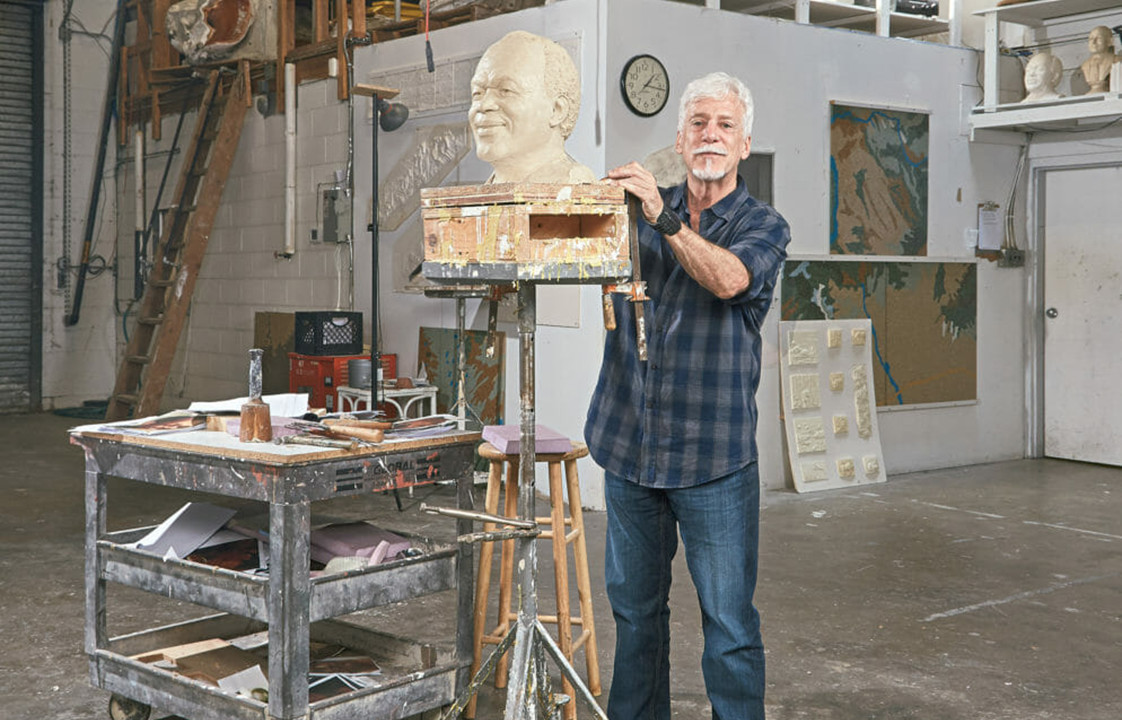
How Do You Build a Monument to Marion Barry?
WRITTEN BY AMANDA WHITING | PUBLISHED ON AUGUST 24, 2017:
If everything goes as planned, starting next March, visitors to the Wilson Building, DC’s city hall, will be greeted by an eight-foot bronze of former mayor Marion Barry waving outside. Maryland sculptor Steven Weitzman was awarded the job by a panel, selected through the DC Commission on the Arts and Humanities, that included Barry’s widow, Cora Masters Barry.
Weitzman, a 33-year resident of the area, has produced dozens of public-art projects, including the heroic-size Frederick Douglass statue in the US Capitol. But depicting a modern figure such as Barry is a different challenge: The late mayor’s statue will be viewed by people who actually knew him—whether admirers (a group that includes the sculptor) or detractors. We spoke to Weitzman about the challenges.
How did you approach the design?
I proposed a sculpture with Barry gesturing toward everyone who might come down Pennsylvania Avenue. The process begins with research about what the man said and did, because all this information becomes part of the design.
What did you want to capture with the raised-arm gesture?
If Barry wasn’t shaking hands, he was waving to people. I wanted to represent him the way I saw him: approachable, personable.
It feels informal compared with your Frederick Douglass bronze.
He was more informal in that way. So much of my work is for government, and the leadership of government isn’t always accessible. But Barry’s approach was different. There was an informality in him.
How is making art for DC different from making art for, say, Little Rock?
I just finished a larger-than-life bronze of the Father of the Nation [Sheikh Mujibur Rahman] for the Bangladesh Embassy. Every project has its own history, personality. When you put art in the public domain, it’s not the same as if you’re just creating it for yourself. Here thousands, if not millions, of people might see it over the years, and that consideration changes how you approach it.
Barry’s legacy wasn’t all positive—there were drug charges, an IRS investigation. Did that affect you?
Not even in the slightest, to be honest with you. I don’t even think about it.
Really?
To me, why cherry-pick things about people to accomplish . . . what? You could do that with me, I could do that with you.
Is there a difference between a statue of the man and one of the mayor?
It’s a big question for this commission, which is not creating a monumental area like the FDR Memorial, where it’s expansive enough to tell a story. If this sculpture will do anything, it will stimulate people to dig a little more into what the story about him is. If I’ve done my job, the man and the mayor should be unified somehow—that would be the best-case scenario.
Has Cora Masters Barry been involved as the design gets refined?
I have been sculpting on the portrait side of this statue at times directly in front of her!
Has she said anything that has informed the sculpture?
When you’re doing something posthumously, all you have to use as a guide is photographs and movies, and they’re limited, two-dimensional. As someone who knew him well, Cora can express things to me, and with that information I can somehow pull it out from the clay. When he was comfortable and relaxed, Marion Barry had this mischievous look, a glint in his eye. When I talked to Cora, she acknowledged there was this certain look. I want to express different aspects of his character even in this fixed pose. Even though it’s a sculpture and not a movie, I want to express multiple dimensions of this man.
This interview has been edited and condensed.
Original Source:This article appears in the September 2017 issue of Washingtonian.


